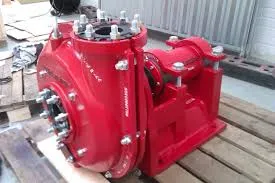Khmer
- Afrikaans
- Albanian
- Amharic
- Arabic
- Armenian
- Azerbaijani
- Basque
- Belarusian
- Bengali
- Bosnian
- Bulgarian
- Catalan
- Cebuano
- Corsican
- Croatian
- Czech
- Danish
- Dutch
- English
- Esperanto
- Estonian
- Finnish
- French
- Frisian
- Galician
- Georgian
- German
- Greek
- Gujarati
- Haitian Creole
- hausa
- hawaiian
- Hebrew
- Hindi
- Miao
- Hungarian
- Icelandic
- igbo
- Indonesian
- irish
- Italian
- Japanese
- Javanese
- Kannada
- kazakh
- Khmer
- Rwandese
- Korean
- Kurdish
- Kyrgyz
- Lao
- Latin
- Latvian
- Lithuanian
- Luxembourgish
- Macedonian
- Malgashi
- Malay
- Malayalam
- Maltese
- Maori
- Marathi
- Mongolian
- Myanmar
- Nepali
- Norwegian
- Norwegian
- Occitan
- Pashto
- Persian
- Polish
- Portuguese
- Punjabi
- Romanian
- Russian
- Samoan
- Scottish Gaelic
- Serbian
- Sesotho
- Shona
- Sindhi
- Sinhala
- Slovak
- Slovenian
- Somali
- Spanish
- Sundanese
- Swahili
- Swedish
- Tagalog
- Tajik
- Tamil
- Tatar
- Telugu
- Thai
- Turkish
- Turkmen
- Ukrainian
- Urdu
- Uighur
- Uzbek
- Vietnamese
- Welsh
- Bantu
- Yiddish
- Yoruba
- Zulu
Telephone: +86 13120555503
Email: frank@cypump.com
ធ្នូ . 09, 2024 20:37 Back to list
Effective Techniques for Maintaining and Repairing Slurry Pumps in Industrial Applications
Understanding Slurry Pump Repair Essential Tips and Techniques
Slurry pumps play a vital role in various industrial applications, including mining, construction, and wastewater treatment. These pumps are designed to handle abrasive and viscous materials, making them critical in transporting slurries of varying compositions. However, like any mechanical equipment, slurry pumps require regular maintenance and occasional repairs to ensure optimal performance. In this article, we will explore the common issues faced by slurry pumps and provide essential tips for effective repair.
Common Issues with Slurry Pumps
1. Wear and Tear Slurry pumps are routinely exposed to abrasive materials that can cause significant wear on wet ends, impellers, and other components. Over time, this wear can lead to reduced efficiency and pump failure.
2. Cavitation This phenomenon occurs when the pressure within the pump falls below the vapor pressure of the fluid, causing vapor bubbles to form and collapse. Cavitation can lead to severe damage to the impeller and housing, drastically reducing the life of the pump.
3. Seal Failures Mechanical seals in slurry pumps are susceptible to damage due to abrasive materials and high-pressure conditions. Worn or damaged seals can lead to leaks, resulting in loss of fluid and potential damage to surrounding equipment.
4. Blockages Slurries often contain solids that can accumulate and block the pump or its piping. This blockage can lead to increased pressure, strain on the motor, and ultimately, pump failure.
Steps for Effective Slurry Pump Repair
1. Regular Inspection Regularly inspecting your slurry pump is crucial. Check for signs of wear on impellers, casing, and seals. Early detection of issues can save significant time and money in repairs.
slurry pump repair

2. Proper Cleaning Before any repair work begins, thoroughly clean the pump and its components. This not only helps in identifying wear but also prevents contaminants from entering the system during repairs.
3. Replace Worn Parts Once you've identified worn components, it’s essential to replace them with high-quality parts. Using OEM (Original Equipment Manufacturer) parts can ensure compatibility and longevity.
4. Addressing Cavitation To prevent cavitation, check the pump's inlet conditions. Ensure that the suction line is appropriately sized, and maintain a steady flow rate. Adding a larger inlet can sometimes mitigate cavitation issues.
5. Seal Maintenance Regularly inspect and maintain mechanical seals. Consider using enhanced sealing materials designed for abrasive and viscous slurries to extend their life and reduce leakage.
6. Clearing Blockages If blockages occur, carefully disassemble the piping and pump components to retrieve the trapped material. Ensure that your pump designs include provisions for easy access to clear these blockages effectively.
7. Document Repairs Keeping thorough records of all repairs and maintenance tasks is critical. Documenting what was done, when it was done, and the condition of parts can help in planning future maintenance and repairs.
Conclusion
Effective slurry pump repair is essential for maintaining the efficiency and reliability of your operations. By understanding the common problems associated with slurry pumps and implementing a thorough maintenance and repair strategy, you can minimize downtime and extend the life of your equipment. Remember to always prioritize safety during repairs and consult with professionals if you encounter complex issues. Through proactive management and diligent repair practices, your slurry pump can continue to perform at its best for years to come.
-
High-Performance Air Pumps for Sand & Gravel | Efficient Transport
NewsAug.03,2025
-
ISG Series Vertical Pipeline Pump - Chi Yuan Pumps Co., LTD.|Energy Efficiency, Corrosion Resistance
NewsAug.03,2025
-
ISG Series Pipeline Pump - Chi Yuan Pumps | Energy Efficiency&Compact Design
NewsAug.03,2025
-
ISG Series Vertical Pipeline Pump - Chi Yuan Pumps Co., LTD.|High Efficiency, Low Noise, Durable
NewsAug.02,2025
-
ISG Series Vertical Pipeline Pump - Chi Yuan Pumps | High Efficiency, Low Noise
NewsAug.02,2025
-
ISG Series Vertical Pipeline Pump- Chi Yuan Pumps Co., LTD.|High Efficiency&Compact Design
NewsAug.02,2025










